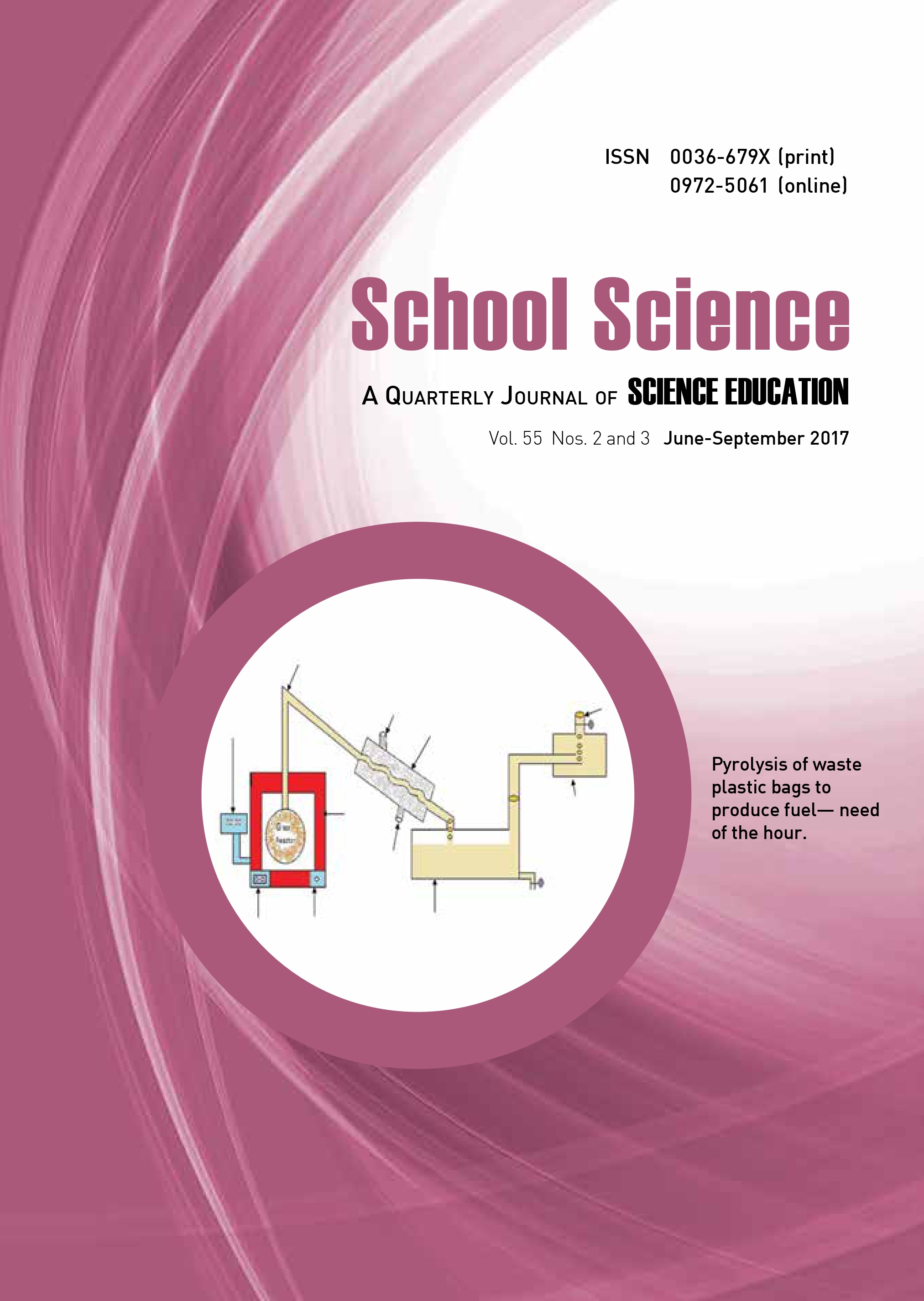Orienting Senior Secondary Physics Students, about Measuring Conductivity of a New Material and its Applications

Published 2017-09-30
Keywords
- polymer electrolyte,
- Polymeric proton battery
How to Cite
Abstract
Plasticizer (Propylene Carbonate, PC) is enhancing the conductivity of a polymer electrolyte PEO: NH4 ClO4 (85:15 wt %) prepared by solution cast method. Preliminary IR and XRD studies suggested that the above said polymer electrolyte is a result of complexation of polymer PEO and salt NH4 ClO4 . Two types of charge carriers are shown to be present in this polymer electrolyte by using transient ionic current measurements. The ionic conductivity of the polymer electrolyte with different amounts of plasticizer PC has been measured by Impedance Spectroscopy and it is shown that the maximum conductivity occurs for 5 wt% of PC which is 10-4 S.cm-1 (approximately 10 times higher than the conductivity of polymeric membrane without PC). The plasticised stable film has been used as an electrolyte in fabrication of a rechargeable polymeric solid state proton battery. The fabricated polymeric re-chargeable batteries uses PEO: NH4 ClO4 (85:15 wt %) + PC 5wt % as the electrolytes with Zn+ZnSO4 .7H2 O+MHx as anode and intercalating layered cathode material (PbO2+V2O5). The discharge characteristics have been studied at different loads. It is found that the addition of metal hydride (as hydrogen supplying anode) improves the time of stable performance, current drain and rechargeability as it ensures a continuous supply of H+ ions. It may be remarked that the use of H+ intercalating/de-intercalating layered material cathode (viz. (PbO2 +V2 O5 ) is essentially responsible for the rechargeability of the cells over many cycles.
